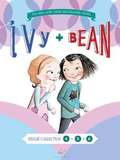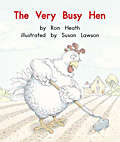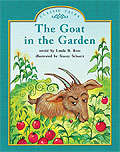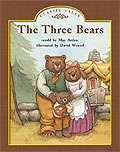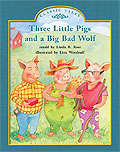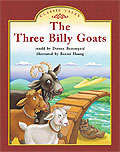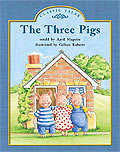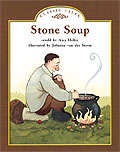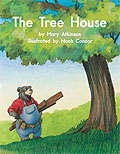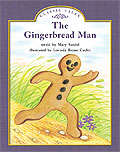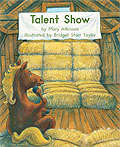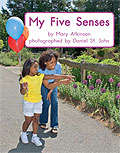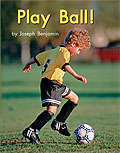- Table View
- List View
Ivy and Bean Bundle Set 2 (Books 4-6)
by Annie Barrows Sophie BlackallThis super-cute bundle continues the adventures of spunky second graders, Ivy and Bean. It includes<P> IVY AND BEAN TAKE CARE OF THE BABYSITTER: What's the worst babysitter you can imagine? Okay, now multiply by a million. Bean's just found out that Nancy is babysitting for the afternoon. After Ivy rescues her from prison, the two girls turn tragedy into opportunity.<P> IVY AND BEAN: BOUND TO BE BAD: Ivy has decided to become good. Extra-super-duperly good. Bean figures that's a big waste of time--until Ivy explains that if you're really good, animals and birds follow you around. Wow! Animals and birds! Bean's going to be good, too! They're going to be nice; they're going to be sweet; they're going to be kind and generous and--Wait a second! How did they end up muddy, wet, and in trouble?<P> IVY AND BEAN: DOOMED TO DANCE: Ooops. Ivy and Bean have made a terrible mistake. They thought that ballet meant leaping, kicking, and cool costumes. Instead, it means they're going to have to be The Two Friendly Squids in a ballet the teacher made up. How embarrassing. As disaster looms, the girls come up with a great escape plan. It's an easy plan, a simple plan, a beautiful plan. It only involves a field trip, a couple of sharks, and some weird animals that glow in the dark.<P> Please note, this book does not have page numbers.
The Very Busy Hen (Fountas & Pinnell LLI Green #Level D, Lesson 10)
by Ron HeathFountas and Pinnell Leveled Literacy Intervention Green System -- 1st Grade
The Goat in the Garden (Fountas & Pinnell LLI Green #Level G, Lesson 77)
by Linda RossFountas and Pinnell Leveled Literacy Intervention Green System -- 1st Grade
The Three Bears (Fountas & Pinnell LLI Green #Level E, Lesson 51)
by May ArthurFountas and Pinnell Leveled Literacy Intervention Green System -- 1st Grade
Three Little Pigs and a Big Bad Wolf (Fountas & Pinnell LLI Green #Level E, Lesson 61)
by Linda RossFountas and Pinnell Leveled Literacy Intervention Green System -- 1st Grade
The Three Billy Goats (Fountas & Pinnell LLI Green #Level J, Lesson 107)
by Doreen BeauregardFountas and Pinnell Leveled Literacy Intervention Green System -- 1st Grade
The Puppets (Fountas & Pinnell LLI Green #Level C, Lesson 52)
by Nancy WestwoodFountas and Pinnell Leveled Literacy Intervention Green System -- 1st Grade
The Three Pigs (Fountas & Pinnell LLI Green #Level D, Lesson 41)
by April MaguireFountas and Pinnell Leveled Literacy Intervention Green System -- 1st Grade
Stone Soup (Fountas & Pinnell LLI Green #Level I, Lesson 95)
by Amy HelferFountas and Pinnell Leveled Literacy Intervention Green System -- 1st Grade
The Picnic (Fountas & Pinnell LLI Green #Level A, Lesson 38)
by Jerry AlbertFountas and Pinnell Leveled Literacy Intervention Green System -- 1st Grade
Snap (Fountas & Pinnell LLI Green #Level B, Lesson 42)
by Liz WardFountas and Pinnell Leveled Literacy Intervention Green System -- 1st Grade
The Tree House (Fountas & Pinnell LLI Green #Level F, Lesson 82)
by Mary AtkinsonFountas and Pinnell Leveled Literacy Intervention Green System -- 1st Grade
The Gingerbread Man (Fountas & Pinnell LLI Green #Level H, Lesson 83)
by Mary SandelFountas and Pinnell Leveled Literacy Intervention Green System -- 1st Grade
The Surprise (Fountas & Pinnell LLI Green #Level E, Lesson 53)
by Nancy LingFountas and Pinnell Leveled Literacy Intervention Green System -- 1st Grade
Talent Show (Fountas & Pinnell LLI Green #Level E, Lesson 55)
by Mary AtkinsonFountas and Pinnell Leveled Literacy Intervention Green System -- 1st Grade
My Five Senses (Fountas & Pinnell LLI Green #Level D, Lesson 70)
by Mary AtkinsonFountas and Pinnell Leveled Literacy Intervention Green System -- 1st Grade
Play Ball! (Fountas & Pinnell LLI Green #Level C, Lesson 54)
by Joseph BenjaminFountas and Pinnell Leveled Literacy Intervention Green System -- 1st Grade
In Winter (Fountas & Pinnell LLI Green #Level H, Lesson 87)
by Marilee BurtonFountas and Pinnell Leveled Literacy Intervention Green System -- 1st Grade

